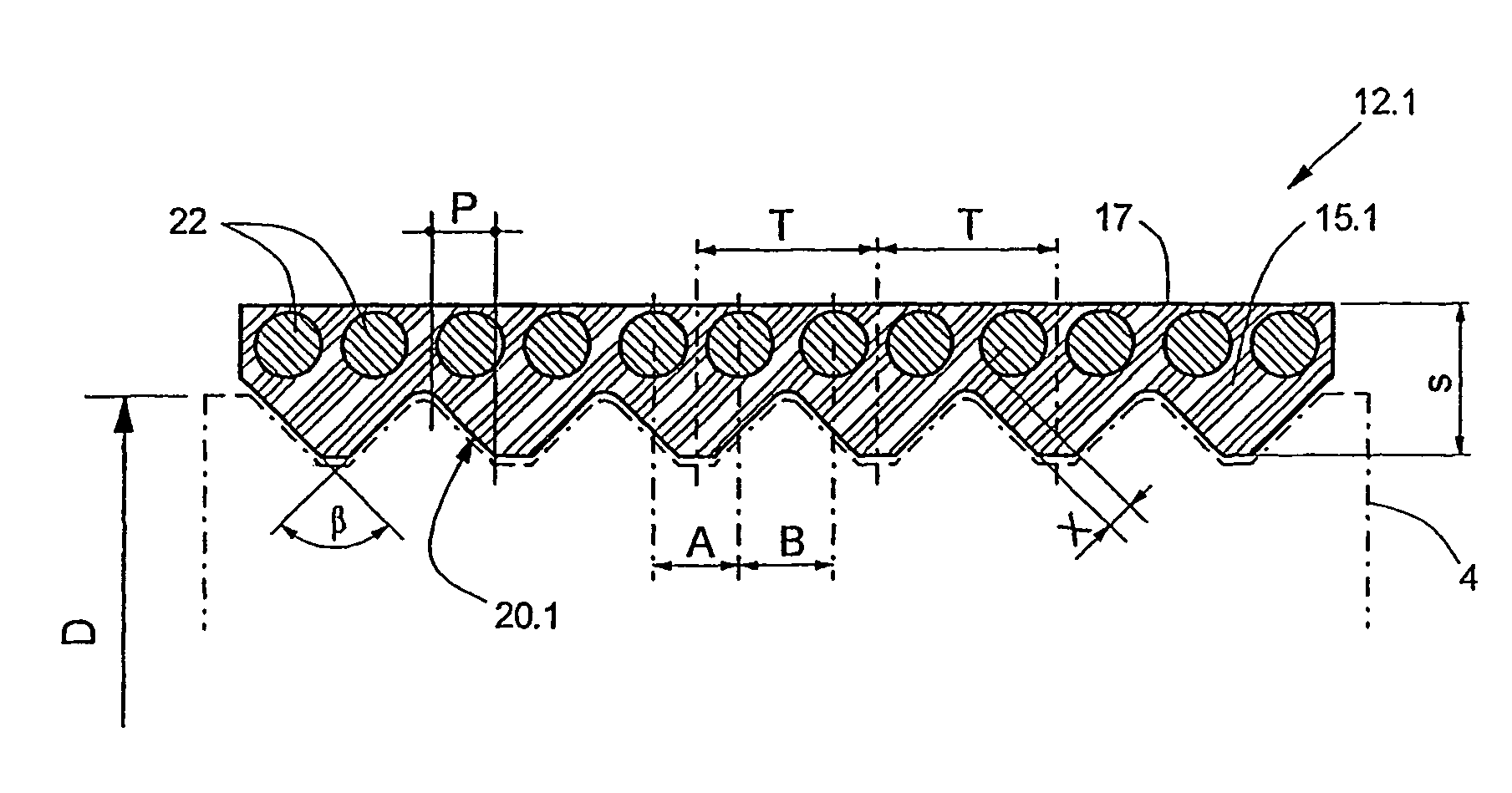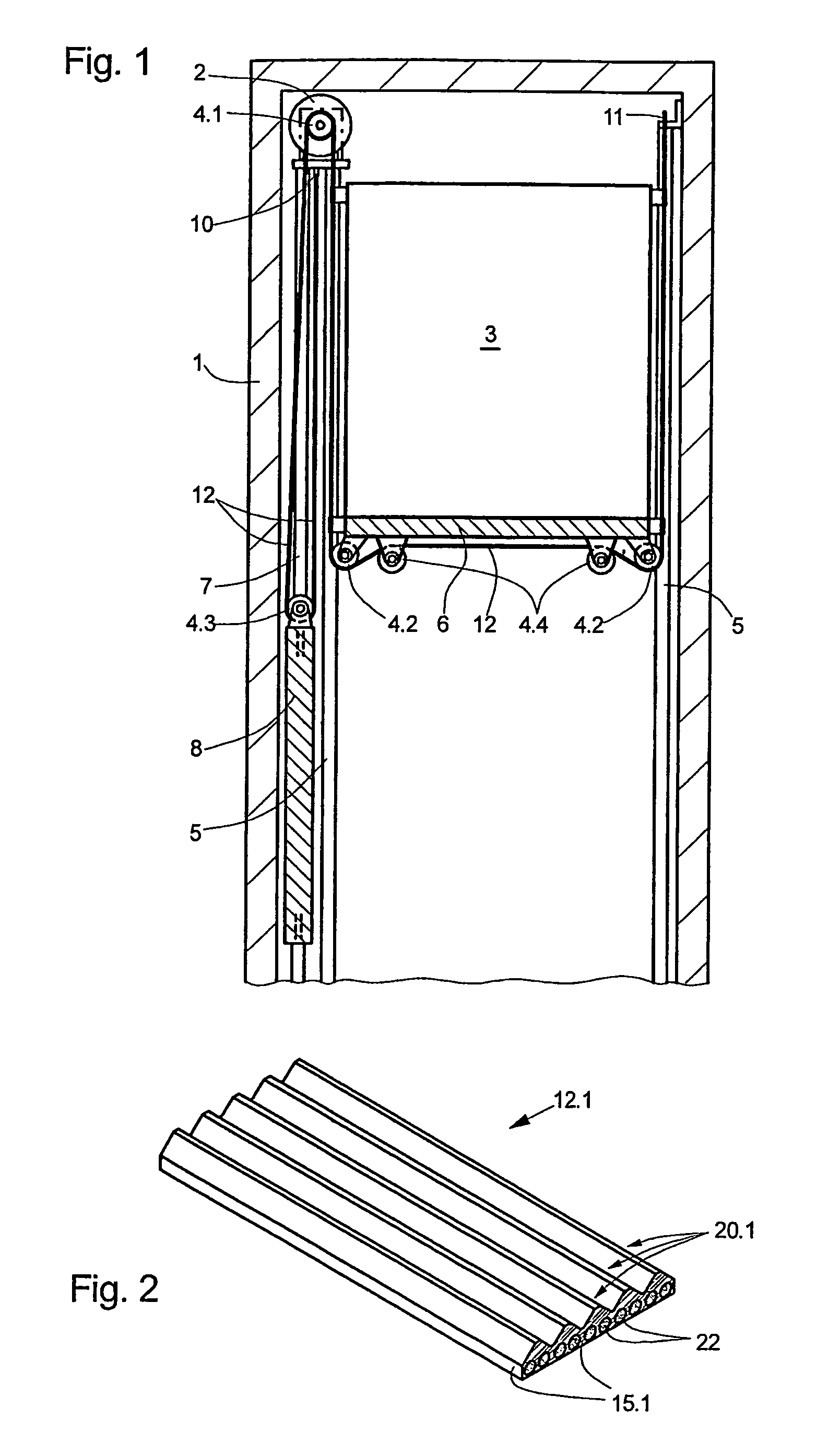Elevator system having a flat belt with wedge-shaped ribs
a wedge-shaped belt and elevator technology, applied in elevators, hoisting equipment, transportation and packaging, etc., can solve the problems of not optimally adapting to the requirements of elevator cage support means, too heavy and expensive, formation of cracks, etc., to reduce the noise of running noise as well as excitation of vibration of the wedge-ribbed belt, and the effect of reducing the bending stress
- Summary
- Abstract
- Description
- Claims
- Application Information
AI Technical Summary
Benefits of technology
Problems solved by technology
Method used
Image
Examples
Embodiment Construction
[0027]FIG. 1 shows a section through an elevator system according to the invention installed in an elevator shaft 1. Essentially illustrated are:[0028]a drive unit 2, which is fixed in the elevator shaft 1, with a drive pulley 4.1[0029]an elevator cage 3, which is guided at cage guide rails 5, with cage support rollers 4.2 mounted below the cage floor 6[0030]a counterweight 8, which is guided at counterweight guide rails 7, with a counterweight support roller 4.3[0031]a support means, which is constructed as a wedge ribbed belt 12, for the elevator cage 3 and the counterweight 8, which support means transmits the drive force from the drive pulley 4.1 of the drive unit 2 to the elevator cage and the counterweight. (In the case of an actual elevator installation, at least two wedge ribbed belts arranged in parallel are present)
[0032]The wedge ribbed belt 12 serving as support means is fastened at its end below the drive pulley 4.1 to a first support means fixing point 10. From this it...
PUM
| Property | Measurement | Unit |
|---|---|---|
| flank angle | aaaaa | aaaaa |
| flank angle | aaaaa | aaaaa |
| flank angles | aaaaa | aaaaa |
Abstract
Description
Claims
Application Information
 Login to View More
Login to View More - R&D
- Intellectual Property
- Life Sciences
- Materials
- Tech Scout
- Unparalleled Data Quality
- Higher Quality Content
- 60% Fewer Hallucinations
Browse by: Latest US Patents, China's latest patents, Technical Efficacy Thesaurus, Application Domain, Technology Topic, Popular Technical Reports.
© 2025 PatSnap. All rights reserved.Legal|Privacy policy|Modern Slavery Act Transparency Statement|Sitemap|About US| Contact US: help@patsnap.com



